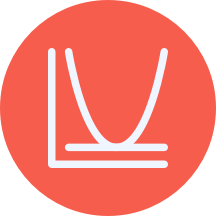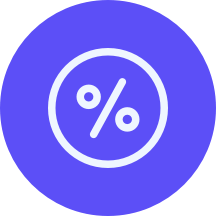Risk Warning: Trading foreign exchange on margin carries a high level of risk, and may not be suitable for all investors. Before deciding to trade foreign exchange you should carefully consider your investment objectives, level of experience, and risk appetite.

Easy Access to

Flexible leverage between 1:50 – 1:1000

Negative balance protection

Real-time risk monitoring

Margin remains unchanged overnight and on weekends.
About Forex Leverage
What is Forex Leverage?
Leverage involves borrowing a certain amount of the money needed to invest in something. In the case of forex, money is usually borrowed from a broker. Forex trading does offer high leverage in the sense that for an initial margin requirement, a trader can build up—and control—a huge amount of money.
To calculate margin-based leverage, divide the total transaction value by the amount of margin you are required to put up:
Margin-Based Leverage = Total Value of Transaction / Margin Required
Examples of Forex Leverage
For example, if you are required to deposit 1% of the total transaction value as margin and you intend to trade one standard lot of USD/CHF, which is equivalent to US$100,000, the margin required would be US$1,000. Thus, your margin-based leverage will be 100:1 (100,000/1,000). For a margin requirement of just 0.25%, the margin-based leverage will be 400:1, using the same formula.
Flexible Leverage from 1:50 up to 1:1000
At AAA Trading, clients have the flexibility to trade by using the same margin requirements and leverage from 1:50 to 1:1000.
Margin Forex is very high risk and leverage should be used wisely.
Leverage Risk
On the one hand, by using leverage, even from a relatively small initial investment you can make considerable profit. On the other hand, your losses can also become drastic if you fail to apply proper risk management.
This is why AAA Trading provides a leverage range that helps you choose your preferred risk level. At the same time, we do not recommend trading close to a leverage of 1000:1 due to the high risk it involves.
About Margin
What is Margin?
In finance, the margin is the collateral that an investor has to deposit with their broker or exchange to cover the credit risk the holder poses for the broker or the exchange. An investor can create credit risk if they borrow cash from the broker to buy financial instruments, borrow financial instruments to sell them short, or enter into a derivative contract.
Buying on margin occurs when an investor buys an asset by borrowing the balance from a broker. Buying on margin refers to the initial payment made to the broker for the asset; the investor uses the marginable securities in their brokerage account as collateral.
How to use Margin
Margin is expressed as the percentage of position size (e.g. 5% or 1%), and the only real reason for having funds in your trading account is to ensure sufficient margin. On a 1% margin, for instance, a position of $1,000,000 will require a deposit of $10,000.
For Forex, Gold and Silver, new positions can be opened if the margin requirement for the new positions is equal or less than the free margin of the account. When hedging, positions can be opened even when the margin level is below 100% because the margin requirement for hedged positions is Zero.
For all other instruments, new positions can be opened if the margin requirement for the new positions is equal or less than the free margin of the account. When hedging, margin requirement for the hedged position is equal to 50%. New hedged positions can be opened if the final margin requirements will be equal or less than the total equity of the account.
Initial Margin
Once the account is opened and operational, you can borrow up to 50% of the purchase price of a stock. This portion of the purchase price that you deposit is known as the initial margin. It's essential to know that you don't have to margin all the way up to 50%. You can borrow less, say 10% or 25%. Be aware that some brokerages require you to deposit more than 50% of the purchase price.
You can keep your loan as long as you want, provided you fulfill your obligations such as paying interest on time on the borrowed funds. When you sell the stock in a margin account, the proceeds go to your broker against the repayment of the loan until it is fully paid.
Margin Trading
| Advantages | Disadvantages |
| May result in greater gains due to leverage | May result in greater losses due to leverage |
| Increases purchasing power | Incurs account fees |
| Often has more flexibility than other types of loans | May result in margin calls which require additional investments |
| May be self-fulfilling opportunity cycle where increases in collateral value further increase leverage opportunities | May result in forced liquidations which result in the sale of securities |